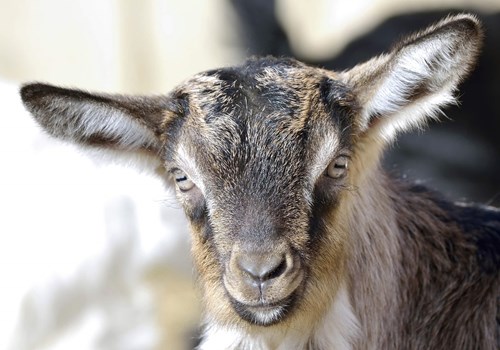African Pygmy Goats Capra aegagnus hircus are diurnal which means they are more active during the day, spending much of their time grazing. They are social animals and prefer to be in the company of other goats.
Herd sizes in the wild tend to be 5 to 20 members, but can be as high as 100. The herds can contain only males, only females and young, or a mix of both. There is a hierarchy structure in the herds, with the males competing for their place in the hierarchy by engaging in head butting. There are many different varieties of colour and sizes of African Pygmy Goat. They have cloven hooves, a long beard on their chin, a short and upward-turned tail, and horns that grow upward from the head. Their hair is generally straight- however, some breeds have a wool undercoat during the winter. Coat colour varies, and can be black, white, red, or brown. Colour patterns include solid colour, spotted, striped, blended shades and facial stripes. Ears may be erect or drooping, small or large.














